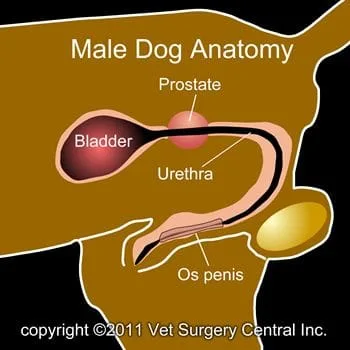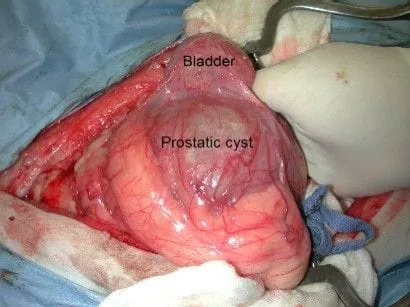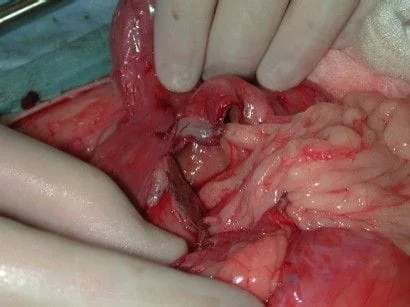Key Points
Castration is an excellent method to prevent a number of diseases of the prostate
Cancer of the prostate is typically malignant and not successfully treated with surgery
Surgical removal of the prostate in dogs results in urinary incontinence in clinical cases

- The prostate is a sexual gland
- It is located around the first part of the urethra
- The urethra is the tube that drains urine from the bladder to the outside
Diseases of the prostate gland
- Benign prostatic hyperplasia
- Enlargement of normal prostatic tissue
- Found only in intact males due to testosterone released from the testicles
- Prostate cancer
- Usually malignant
- Cysts of the prostate
- Benign pockets of fluid in the prostate
- Abscesses of the prostate
- Pockets of pus within the prostate tissue
- Prostatitis
- Generalized infection of the prostate gland
Clinical signs of prostate disease
- Straining to urinate
- Voiding small amounts of urine frequently
- Blood tinged urine
- Dripping blood from the penis
- Constipation and straining to defecate
- Lethargy
- Fever
- Holding tail slightly away from back end
- Weight loss
- Your pet may have none of the clinical signs and have a significant disease of the prostate
- Some pets only have a single or a few signs
Tests done to evaluate disease of the prostate
- Complete blood cell count
- Chemistry profile to check internal organ function
- Urinalysis and urine culture to check for infection
- Abdominal and chest radiographs (x-rays) to check for spread of cancer
- Abdominal ultrasound
- The radiograph below of the abdomen demonstrates displacement of the bladder to the bottom of the abdomen and displacement of the colon to the top of the abdomen; the white tube is a urinary catheter that is placed in the bladder; this dog had difficulty urinating and defecating

Treatments
- Benign prostatic hyperplasia
- Castration
- Prostatitis (infection)
- Castration and antibiotics for 6 to 8 weeks
- Cysts of the prostate
- Castration
- If cysts are large surgical draining of the cysts and omentalization (see below)
- Cancer
- Nearly all cases of prostate cancer have spread of cancer
- Removal of the prostate will result in an incontinent dog, therefore it is not a practical choice
- Palliative treatment may necessitate placing a tube in the bladder through the side for drainage of urine if the urethra is obstructed
- Prostatic abscesses
- Surgical drainage of the abscesses
- Omentalization of the abscesses (see below)
- Castration
- Antibiotics
- Fluid therapy
- Omentalization
- The omentum is a lacy vascular fatty structure which is located in the abdomen
- The omentum pulls infection and fluid away (also known as the watchdog of the abdomen)
- The omentum, when surgically inserted into the prostate, helps to prevent recurrence of the abscesses and cysts
- The photo below demonstrates a the large prostatic cyst which is attached to the bladder

- The photo below shows the appearance of the omentum used to heal a prostatic cyst

- The photo below shows the fatty omentum which is placed in the Prostatic cyst

Potential complications
- Anesthetic death
- Disseminated intravascular coagulation
- Spread of cancer if it is present
- Incontinence
- Recurrent infection
- Wide spread infection in the abdomen
- Recurrence of abscesses


